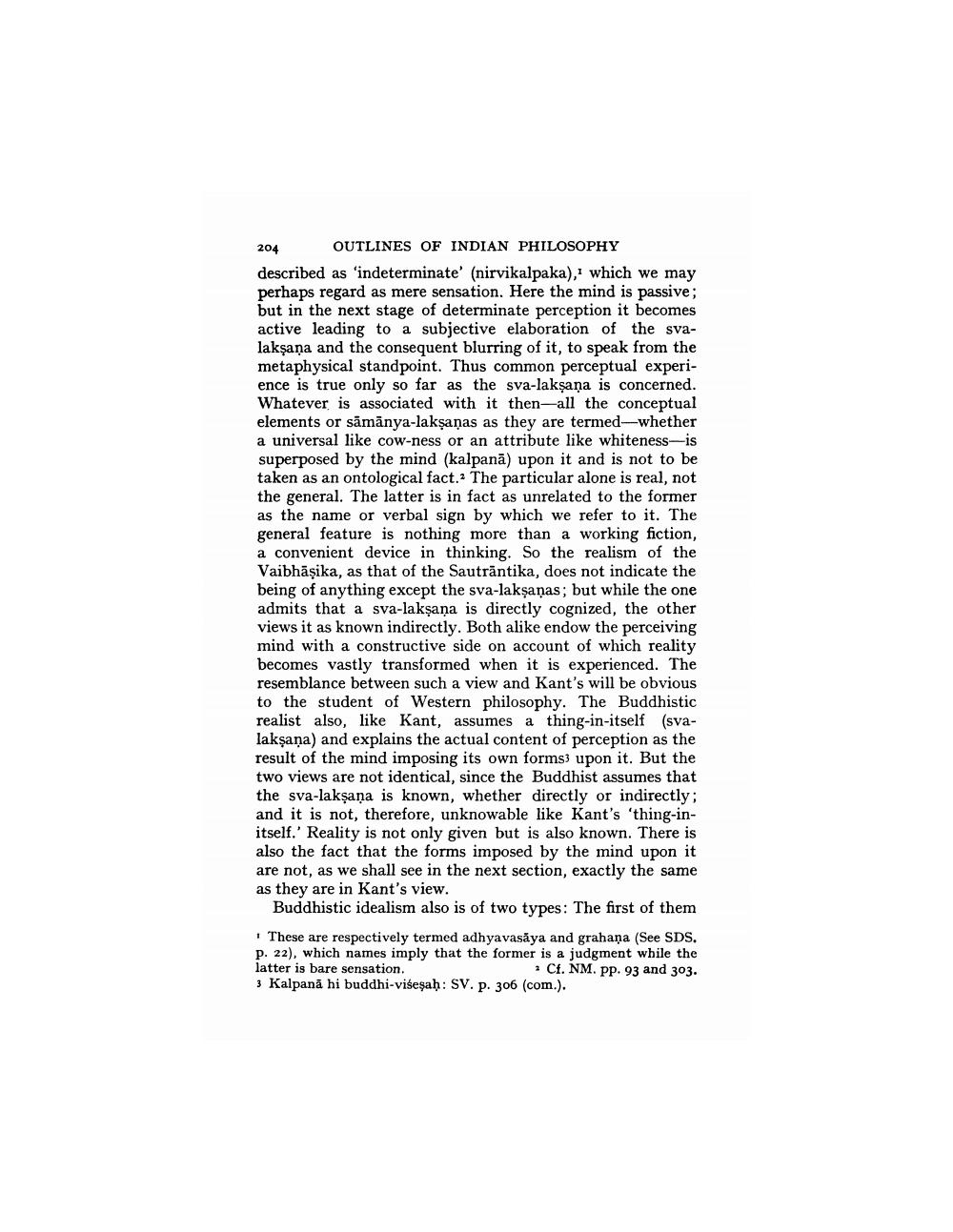________________
204 OUTLINES OF INDIAN PHILOSOPHY described as 'indeterminate (nirvikalpaka)," which we may perhaps regard as mere sensation. Here the mind is passive; but in the next stage of determinate perception it becomes active leading to a subjective elaboration of the svalaksana and the consequent blurring of it, to speak from the metaphysical standpoint. Thus common perceptual experience is true only so far as the sva-lakşaņa is concerned. Whatever is associated with it then-all the conceptual elements or sämänya-laksaņas as they are termed--whether a universal like cow-ness or an attribute like whiteness-is superposed by the mind (kalpanā) upon it and is not to be taken as an ontological fact. The particular alone is real, not the general. The latter is in fact as unrelated to the former as the name or verbal sign by which we refer to it. The general feature is nothing more than a working fiction, a convenient device in thinking. So the realism of the Vaibhāşika, as that of the Sautrāntika, does not indicate the being of anything except the sva-laksanas; but while the one admits that a sva-lakşaņa is directly cognized, the other views it as known indirectly. Both alike endow the perceiving mind with a constructive side on account of which reality becomes vastly transformed when it is experienced. The resemblance between such a view and Kant's will be obvious to the student of Western philosophy. The Buddhistic realist also, like Kant, assumes a thing-in-itself (svalaksana) and explains the actual content of perception as the result of the mind imposing its own forms3 upon it. But the two views are not identical, since the Buddhist assumes that the sva-laksana is known, whether directly or indirectly: and it is not, therefore, unknowable like Kant's 'thing-initself.' Reality is not only given but is also known. There is also the fact that the forms imposed by the mind upon it are not, as we shall see in the next section, exactly the same as they are in Kant's view.
Buddhistic idealism also is of two types: The first of them
These are respectively termed adhyavasaya and grahaņa (See SDS. p. 22), which names imply that the former is a judgment while the latter is bare sensation.
Cf. NM. Pp. 93 and 303. 3 Kalpana hi buddhi-višeşah: SV. p. 306 (com.).




